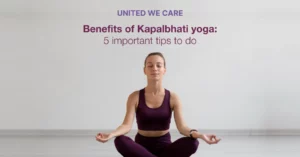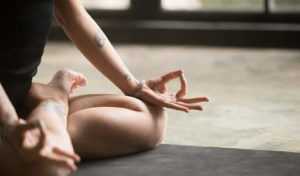Yoga is undoubtedly one of the best exercises to burn calories and attain mental peace. Moreover, unlike other types of exercise, yoga can help you cope with the most terrible aches in your body while boosting your immunity to numerous diseases.
Yoga is categorised into Hatha yoga and Vinyasa yoga, which are equally beneficial. However, people looking for more intense yoga sessions and faster results should opt for Vinyasa yoga.
What is Vinyasa yoga?
Vinyasa yoga, also known as flow yoga, is a great way to synchronise your breathing and body movements. It is also regarded as one of the most exciting types of yoga, as there always seems to be a new pose to try. Consequently, no two Vinyasa classes are identical.
Vinyasa comes from two Sanskrit terms: ‘Vi’ (the prefix) and ‘Nyasa’. Vi means ‘variations’ while Nyasa refers to acting while bounded by a prescribed limit. This limit can be the rhythmic flow of exhaling and inhaling, which is an integral component of yoga.
What are the benefits of Vinyasa yoga?
- The prime reason people practice Vinyasa yoga is to gain strength and endurance. You can easily attain it due to the absence of breaks between poses; the rapid switching between challenging exercises helps boost overall fitness.
- Cardio is probably the most reliable exercise for getting into good shape and losing fat. Also, it results in better heart health and larger lung capacity. Vinyasa yoga is an excellent way to train your cardiovascular muscles, and the simple yet physically challenging sessions give you a great sense of energy and mind relaxation.
- Several studies have shown that women who practice Vinyasa yoga regularly report lower stress levels. Many of these women have also been able to quit smoking easily.
- Yoga is proven to improve the senses and increase the body’s stability. The fast-paced movements practised in Vinyasa yoga can significantly improve the coordination between your body and mind.
How to perform Vinyasa yoga
Here are some of the popular postures practised in Vinyasa yoga:
- Upward Facing Dog
Initiate the posture by lying down on a mat face down. Ensure your legs are fully stretched out. Once in the position, place your palms opposite each shoulder and push to lift just your upper body off the ground with your arms. Press the tops of your feet into the mat to lift and hover your knees; this will help awaken and engage your quadriceps muscles.
- Chair Pose
Stand relaxed and tall while keeping your feet apart at a hip-width distance. Raise your arms overhead so they are facing your ears. Bend your knees so your thighs are as parallel to the floor as you can manage. Press down toward your heels. Maintain this posture for 30 seconds to a minute. To end the pose, straighten your knees while inhaling.
- Warrior 1 Pose
While standing, place your right foot forward by about four feet. Keeping your foot parallel and with your toes pointing to the top of the mat, bend your knee until you form a lunge. Ensure your left leg is straight behind you and rotate your left heel inwards at a 45-degree angle. Raise your arms above your head with the palms facing inward and maintain steady downward pressure on the shoulders. Press your shoulders together and downwards, and raise your chin gradually until your gaze rests on your hands straight overhead. Maintain this pose for as long as you like.
How Vinyasa yoga helps maintain mental peace
Most people believe they can achieve mental peace and mindfulness by practising yoga. Such postures are indeed beneficial in calming the mind and creating an overall improvement in psychological and physical health.
In a yoga session, the body and mind become fully synchronised with the breath, which helps to clear mental fog and instability. The physical tension exerted while performing the poses helps strengthen physical health.
Additionally, a calm and healthy mind helps you get sound sleep, which is essential for the proper functioning of the mind. As a result, students and other professionals practice Vinyasa yoga, as it can give them a sharp and alert mind. Also, regular yoga practice will help reduce anxiety and the risk of mental burnout.
To practice yoga effectively, you must start your day with it and on an empty stomach. Choose a comfortable, spacious, and properly ventilated space to ensure a proper supply of oxygen. Place your yoga mat on a non-slippery surface and start by relaxing your body with a savasana, which is where you lie down on the carpet in an utterly relaxed mode. Begin with easy poses and gradually proceed to more advanced ones. Remember, consistency is the most critical factor in achieving any goal.
Conclusion
Vinyasa yoga, also known as flow yoga, is a great way to synchronise your breathing and body movements. Opting for regular Vinyasa yoga classes is never a bad idea. The benefits of practising yoga are endless and can elevate mental and physical health holistically.











